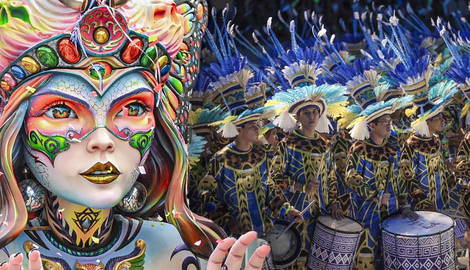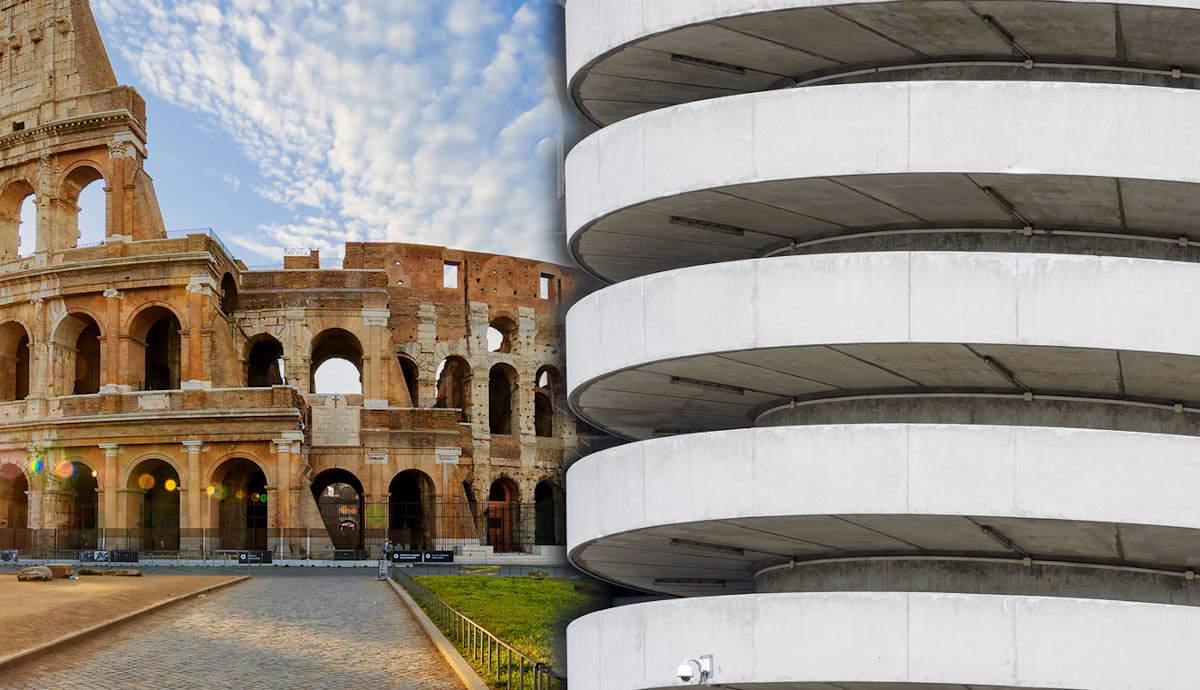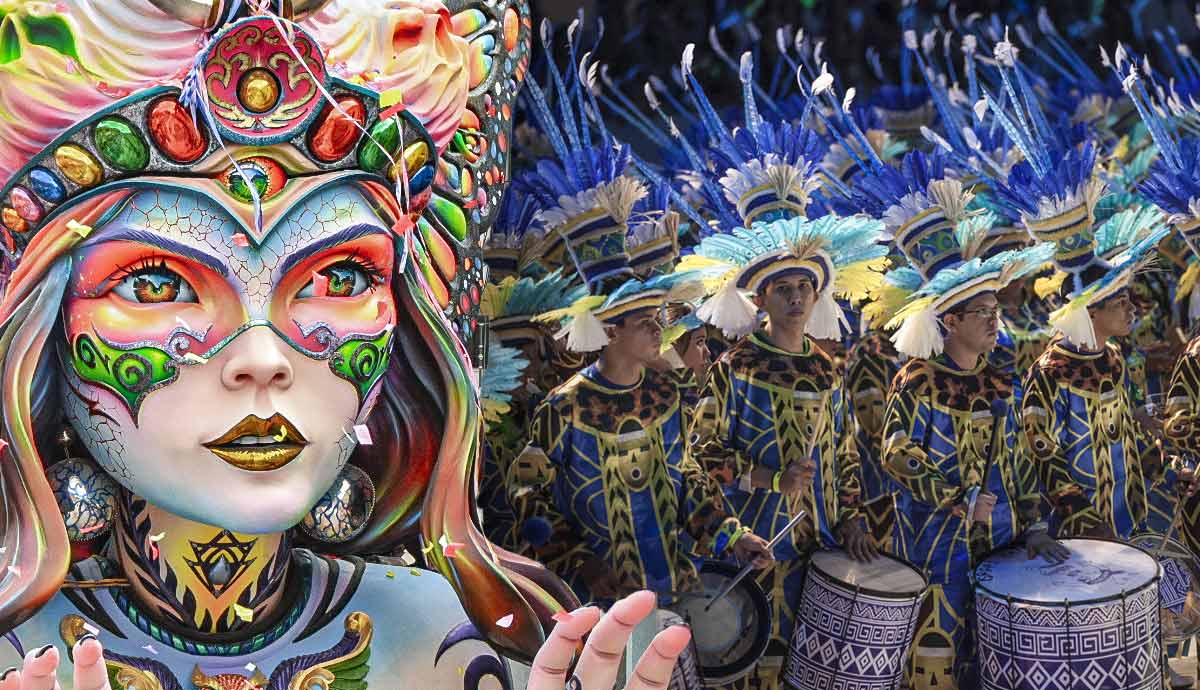
South Americans are famous for their vibrant zest for life and deep-rooted spirituality. They’re also renowned for knowing how to celebrate in style. It is not surprising, then, to learn that South America hosts some of the world’s best cultural festivals. From honoring their dearly departed to celebrating the harvest and appeasing ancient gods, the continent’s best cultural festivals offer a window into its varied history. While some fiestas are internationally known, others remain way off the tourist radar. And that’s a pity because they are arguably the most authentic festivals in South America.
1. Carnival in Rio de Janeiro, Brazil — February / March
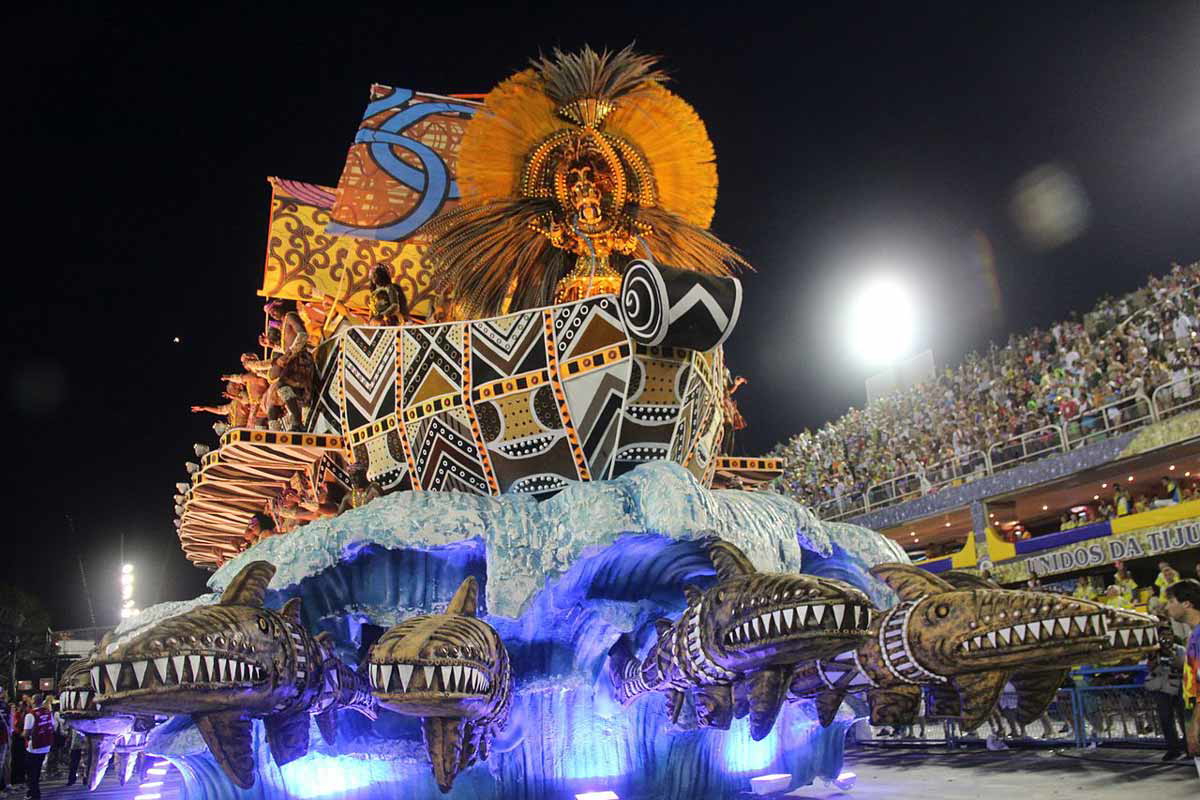
Rio’s Carnival is probably the first to come to most people’s minds when mentioning cultural festivals in South America. It is certainly the one that gets the most international press. It is held just before Lent and epitomizes the joyful and exuberant spirit for which Brazil is renowned.
Rooted in European and African traditions, Carnival celebrates life, music, and dance. Taking a few days to feast with abandon before undertaking Lent is a Christian tradition originating from Italy, specifically, the Carnevale of Venice. Over the centuries, though, Rio’s fiesta has taken on a life of its own, evolving into the incredibly extravagant spectacle we know today.
The heart of Carnival is the Samba Parade held at the specially built Sambadrome, where some 200-odd samba schools from all over Rio compete with flamboyant floats, dazzling costumes, and hypnotic dances. These performances showcase the city’s rich Afro-Brazilian culture, which has shaped much of its identity. The parade is a feast for the senses, with thousands of dancers shaking to the rhythms of samba, one of Brazil’s most iconic music genres.
Yet Carnival isn’t confined to the Sambadrome alone—that is only the
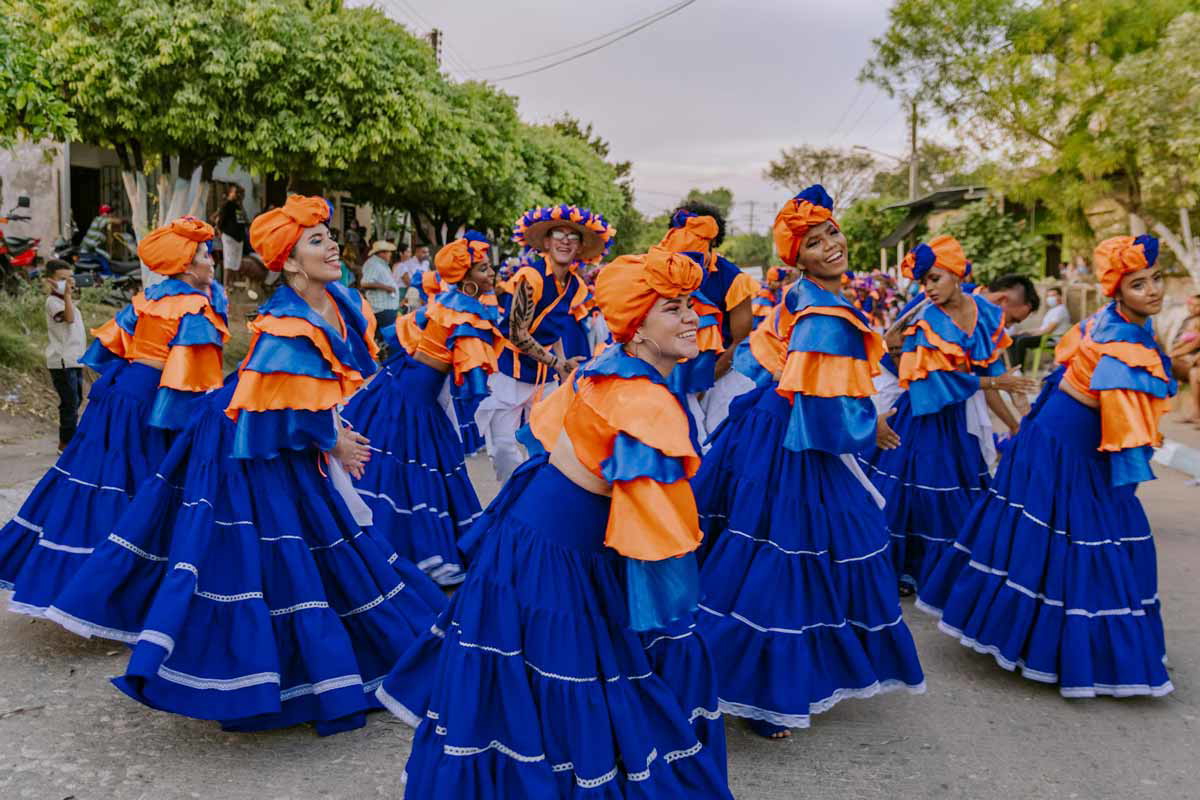
big finale on the last four nights of the festival. For two weeks prior, street parties (or blocos) take over Rio’s neighborhoods, turning the entire city into party central. The best part is that locals could not care less if you don’t have a single rhythmic bone in your body. All they want is to see you join in and have fun. So, when they grab you off the streets for a dance, never decline!
Those lucky enough to have attended would agree: Rio’s Carnival is the one international cultural festival that everyone should experience at least once in their life.
2. Inti Raymi in Cusco, Peru — June 24
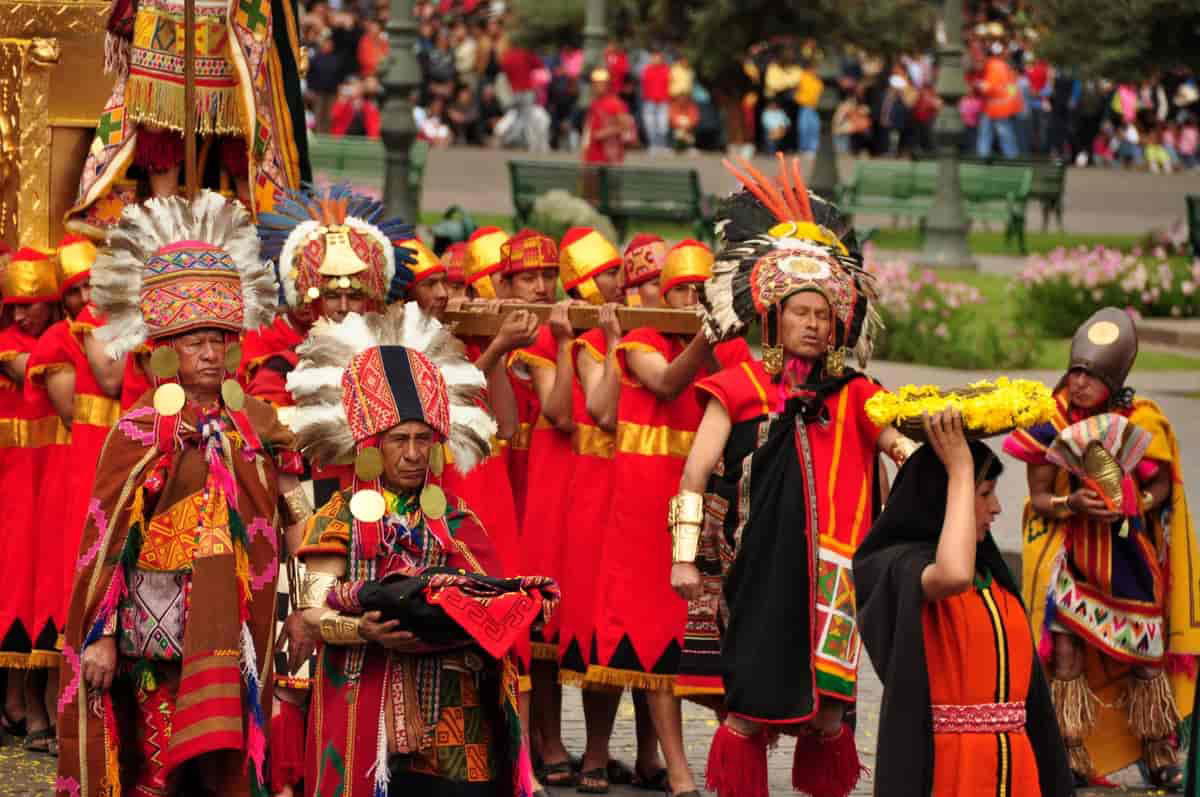
Every year on June 24, Cusco hosts Inti Raymi, or the Festival of the Sun, one of South America’s most prominent pre-Columbian festivals. For the ancient Incas, Inti, the Sun God, was the most revered deity, and this celebration—dating back to the early 1400s—was held to honor and appease him through animal sacrifices, lavish processions, dances, and feasts that lasted for days.
Though the Spaniards banned it in 1536, Inti Raymi was revived in 1944 when a film crew aiming to reconstruct the ancient ritual rekindled indigenous enthusiasm for the beloved sun god. While the original festival took place in Cusco’s city center, today’s celebrations are held at the nearby ancient ruins of Sacsayhuamán, where a pair of llamas is still ceremonially sacrificed.
Throughout the last week of June, the city comes alive with street parties, parades, and traditional performances, making it one of Peru’s biggest and most important cultural events. It is also one of the busiest since it falls in the heart of peak tourist season at Machu Picchu.
3. Fiesta de la Vendimia in Mendoza, Argentina — March
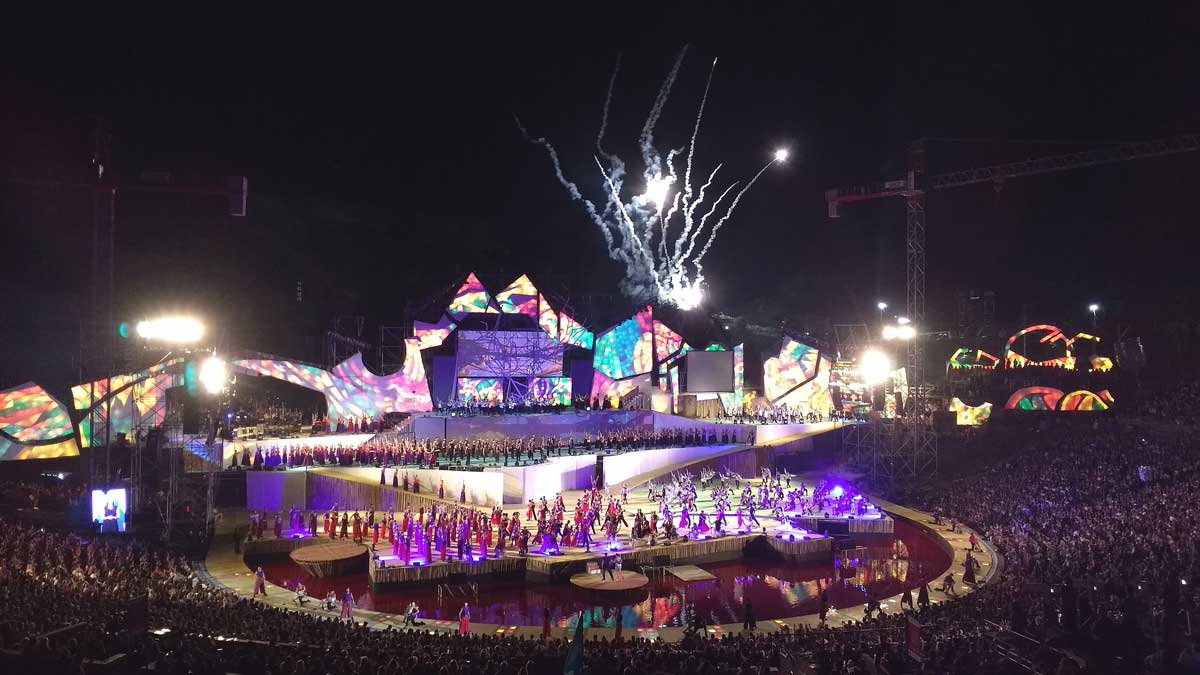
Wine lovers, this one is for you!
Mendoza is Argentina’s premier wine-producing region. It is in the southern region and is framed by stunning Andean peaks. Every March, the enticing town hosts its harvest festival (Fiesta de la Vendimia), and it is one of the best and most flamboyant in South America. The festival is not only focused on wine, per se, it also acknowledges Mendoza’s agricultural heritage and the hard work of local farmers. Spanish colonizers began planting vines here in the early 16th century, and their descendants have essentially never stopped.
Vendimia culminates in a grand parade, where wine “queens” from the region’s many smaller towns are crowned and presented in an impressive procession. There is also a stunning show at the Frank Romero Day Greek Theatre, where traditional dances, music, and a dramatization of the harvest are performed.
Mendoza is a fantastic place to visit and enjoy at any time of year, but it truly comes alive during the harvest festival—it is the perfect time to immerse yourself in Argentine culture and enjoy some world-class wines.
4. Parintins Folklore Festival, Brazil — Last Week of June
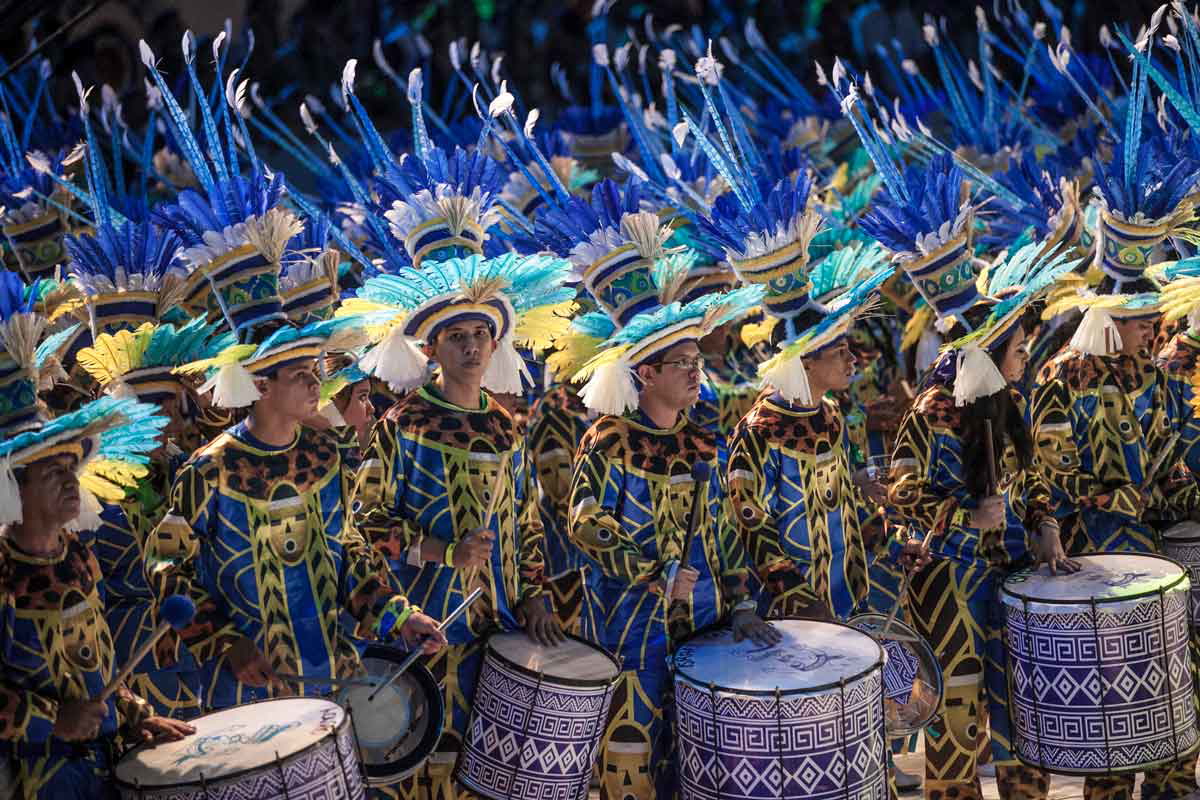
For those who love folklore and indigenous traditions, the Parintins Folklore Festival in the Brazilian Amazon is a must. It is arguably the biggest and most important South American cultural festival after the Carnival that hardly anyone outside the region has ever heard about.
The Parintins festival is a celebration of the folkloric traditions of local Amazonian cultures and is centered on the mythological figure of the Boi-Bumbá, a fabled, resurrected ox. It takes place on the island of Tupinambarana, in the heart of the rainforest, and features two teams—Garantido (the red team) and Caprichoso (the blue team)—competing to tell the story of the ox through music, dance, and theater. The two teams compete in a specially built stadium—the Bumbódromo—and that is just one of many similarities with the Carnival held in February.
Attending this festival is quite adventurous as Tupinambarana is only accessible by boat. The journey from Manaus takes around 18 hours, and if you take the local commuter boat, you can indulge in an Amazon River cruise at a fraction of the usual price (and also, a fraction of the comfort). Note that the island is tiny, and accommodation sells out months in advance, so book early. After all, the festival may seem “obscure” to outsiders, but it is the most anticipated party of the year for local Amazonian communities.
5. La Diablada in Oruro, Bolivia — February or March
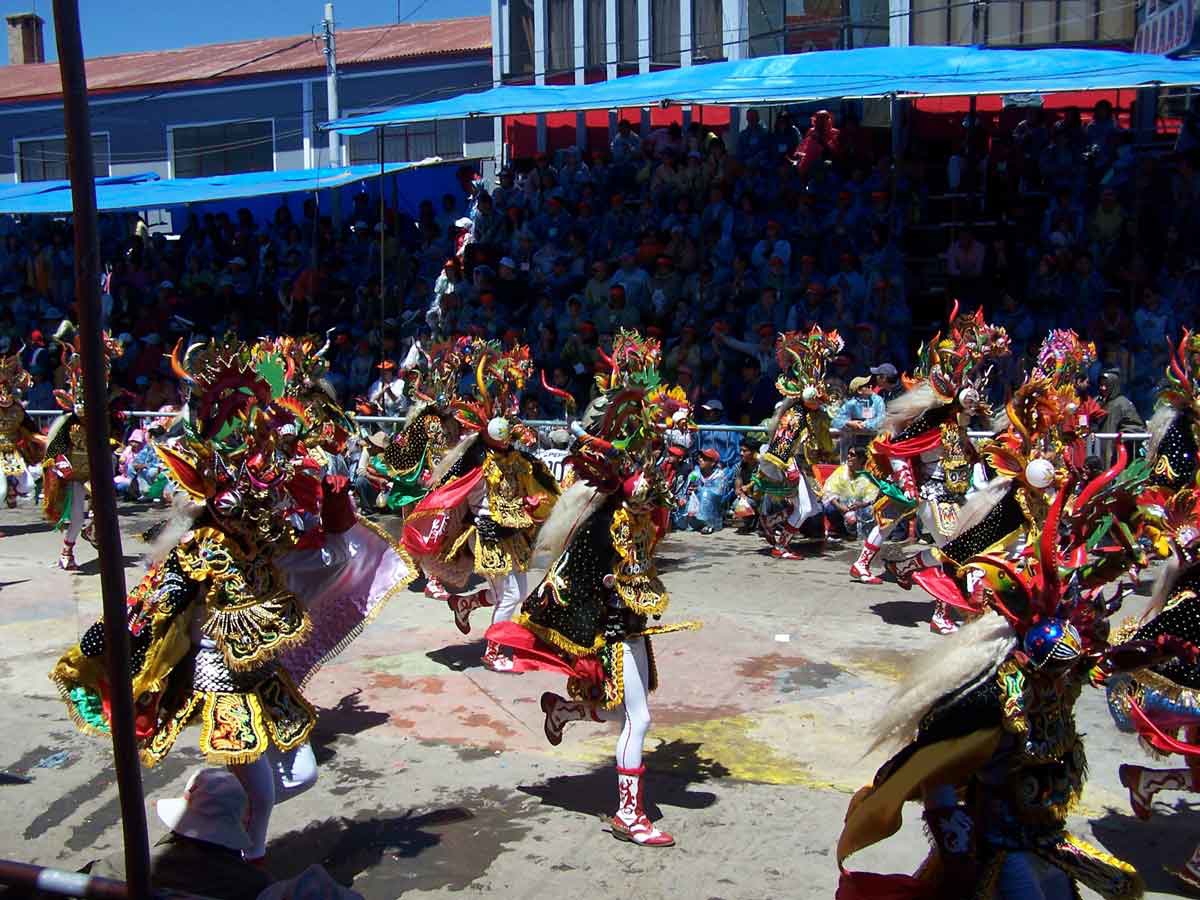
If you’re seeking a festival that combines culture, history, and a touch of the supernatural, head to Oruro in February or March for La Diablada, one of the most captivating celebrations in Bolivia.
This festival is part of the Carnaval de Oruro, which UNESCO inscribed in 2001. The Diablada is a dramatic procession that depicts the battle between good and evil, fusing Andean and Catholic symbolism.
The central figure of La Diablada is “Tio”—the Devil—who represents the Andean deity of the underworld. Dancers don costumes and masks and perform the Diablada, the traditional dance which gives the festival its name. The competitive folk dance signifies the struggle between the two opposing forces and has its origins in the mythological beliefs of the indigenous inhabitants of the Bolivian Altiplano.
Although the festival began long before the Spanish arrived on the continent, Catholic traditions heavily influenced it. The cultural significance of this festival is enormous in Bolivia, as it poignantly embodies the post-Columbian influence that has shaped its entire history.
6. Festa Junina in Northeast Brazil — June
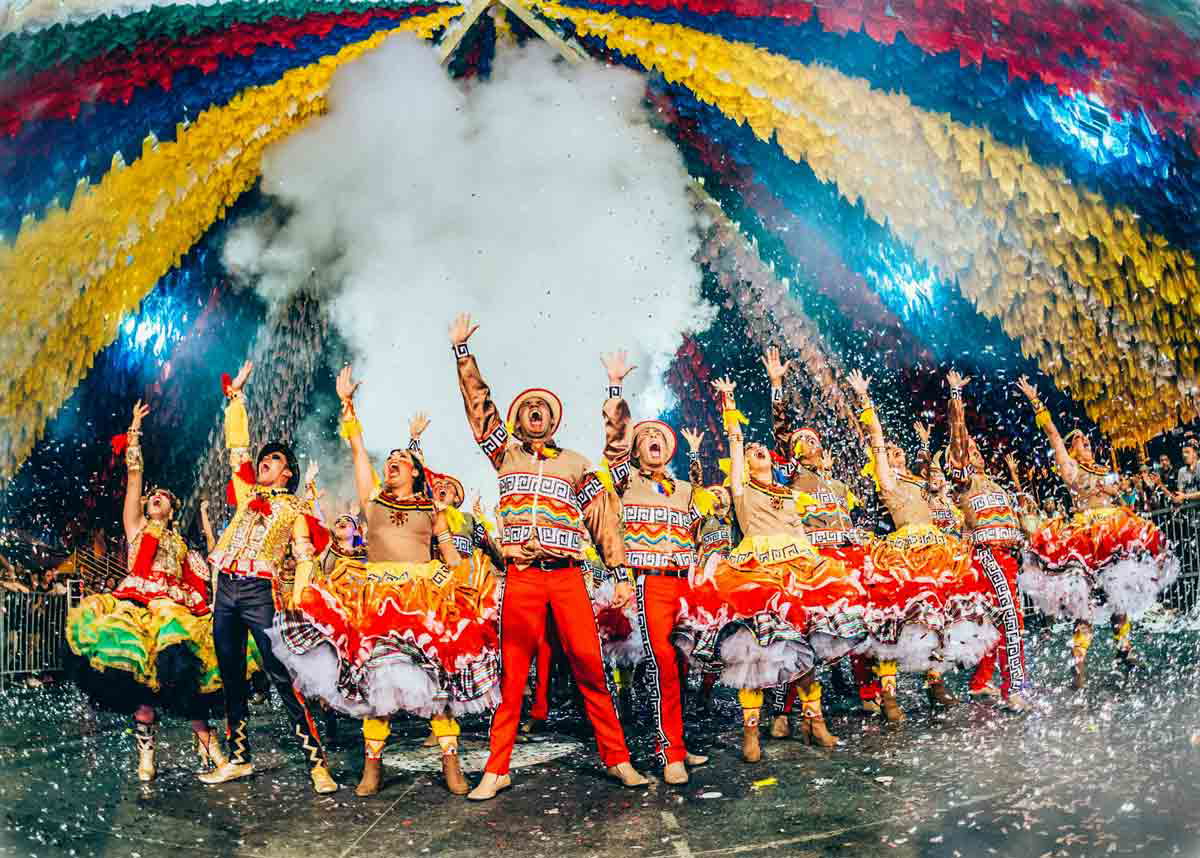
The June Festival—or Festa Junina—is another major Brazilian celebration barely known to the outside world. This time, it is to mark the harvest. It takes place all over the country, although the northern regions put on the biggest parties. Cities like Campina Grande and Caruaru are transformed into bona fide festival grounds, with colorful decorations, street events, an abundance of food, and musical performances. Revelers don country-style clothing, pants and suspenders for men, and checkered dresses and painted-on freckles for the ladies.
The festival’s staple music and dance is the forró, a beautiful performance of couples that closely resembles the lambada—imagine a compromise between the fast-paced salsa and the super sensual bachata.
One of the few cultural festivals in South America that does not boast pre-Columbian roots, the Festa Junina is essentially the Brazilian version of mid-summer. Portuguese colonizers introduced it, and it is closely linked to the Catholic saints’ days. Over the centuries, however, Brazilians did what Brazilians do best. They took your ordinary European religious procession and turned it into a colorful and glorious celebration of local traditions.
The Junina fiesta lasts an entire month, and even though it lacks the flair (and budget) of Rio’s Carnival, it is just as entrancing.
7. Carnaval de Negros y Blancos, Pasto, Colombia — January 2-7
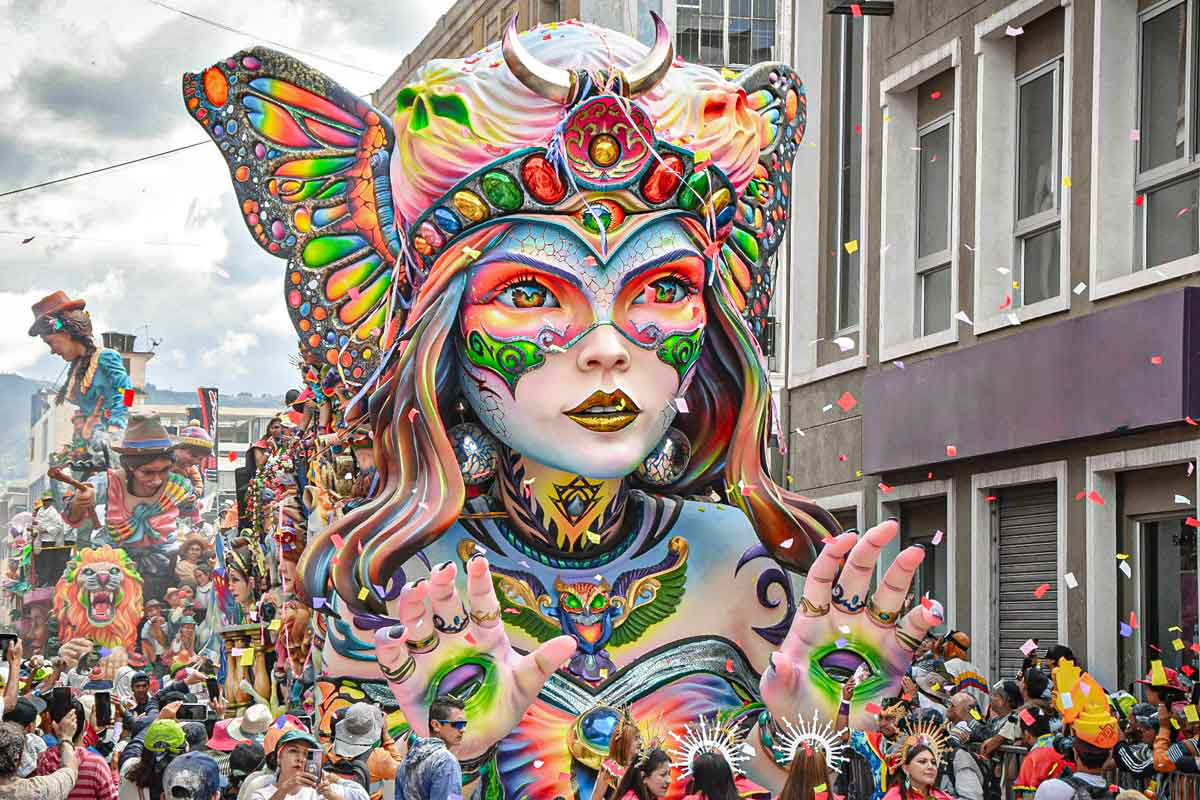
The further north you travel in South America, the more the cultural festivals begin to blend with African traditions. A beautiful example is the “Black and White” festival in Colombia, held in Pasto in the first week of the new year. This carnival blends African and indigenous traditions with copious Spanish influence and is undoubtedly one of the most unique festivals in South America. The festival’s name derives from the symbolic coloring of participants’ faces with black or white paint, which is meant to celebrate Colombia’s racial diversity.
Multiracialism may not have had such a festive start in Colombia centuries ago, but it is now something that the country is most proud of. Aside from its exceptional social diversity, Forbes also ranks Colombia as the third-most beautiful country in the world. In case you’re looking for extra enticement to plan a visit.
The highlight of the festival is the Grand Parade on the second-to-last day, where colorful floats and giant figures flood the street, and participants dance to Afro-Colombian and indigenous rhythms. As you might expect, the festival features arts, music, and cultural performances—all things for which Colombia is world-renowned. The festival has been defined as an intangible UNESCO heritage tradition.
8. Semana Santa in Ayacucho, Peru — March or April
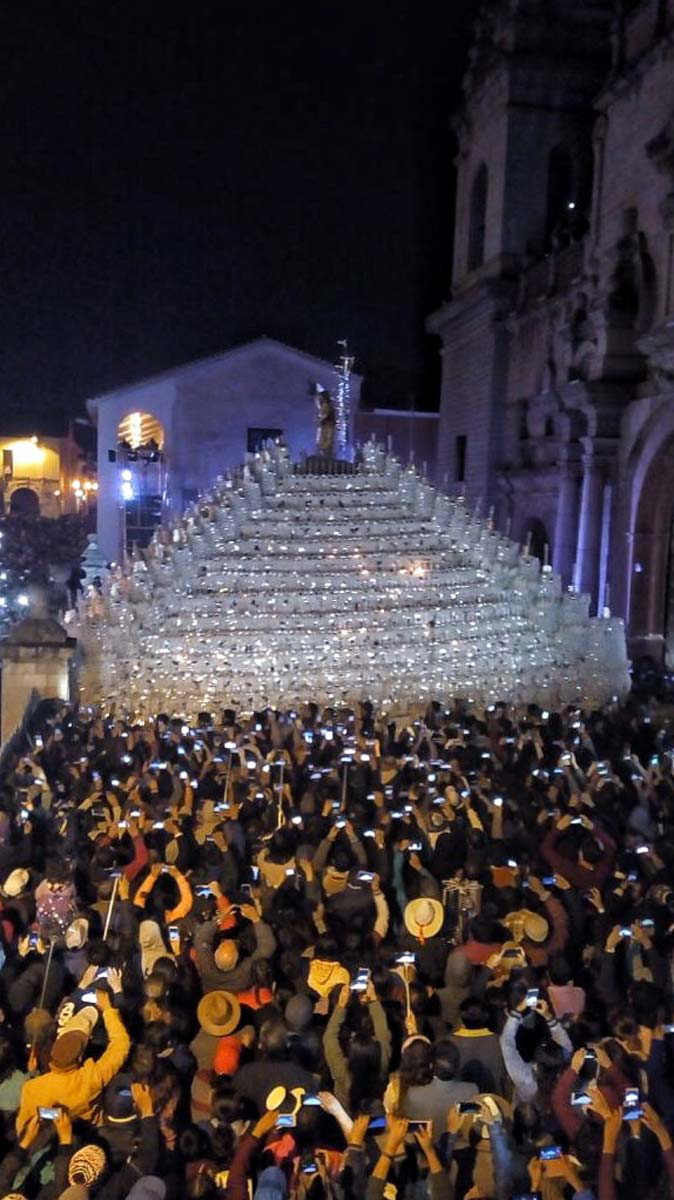
South America is exceptionally spiritual and most fervently Catholic. The most important religious event on the continent and the busiest travel week is the one preceding Easter.
In Peru, Holy Week celebrations are on another level. While many cities put on elaborate festivities, the one in Ayacucho stands out. Witness dramatic reenactments of Christ’s Passion, complete with processions, candlelit vigils, and long prayer sessions. The primarily Catholic festivities are sprinkled with abundant indigenous Andean traditions, creating a vibrant scene that wonderfully showcases and honors both faiths.
Ayacucho is a spectacular Andean city that saw major historical events play out on its streets. First, there was the 1824 fight for independence, and in more recent history, the town was at the receiving end of brutal attacks by the Sendero Luminoso (Shining Path). This extremist anti-establishment guerilla group terrorized the country throughout the 1980s. Today, it is known as an off-the-beaten-path destination. It is ideal for those who wish to enjoy the Peruvian Andes and its fascinating cultures without the big tourist crowds.
9. Fiesta de la Candelaria, Puno, Peru — February
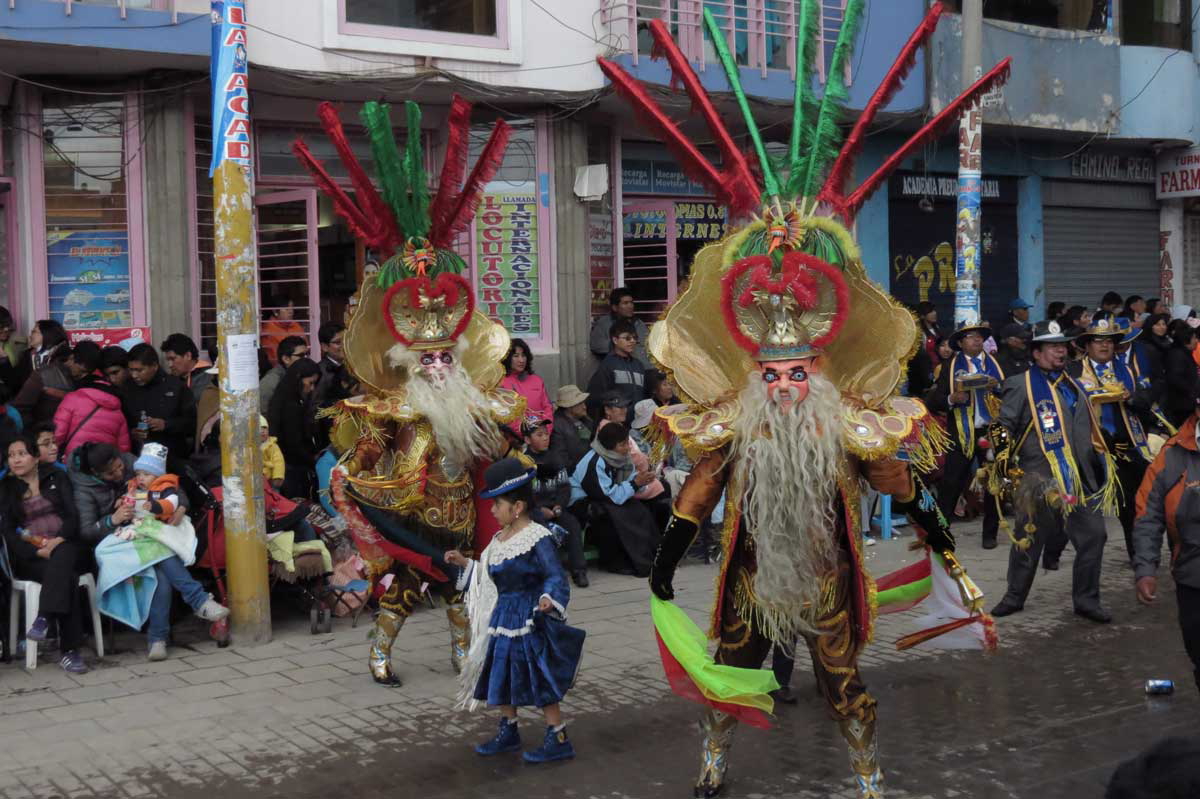
Another sensational Andean festival is the Fiesta de la Candelaria, which is held in Puno, on the shores of Lake Titicaca. It celebrates the region’s patron saint and features a vast procession, traditional dances, and music from the Andes. Much as with Holy Week, the festival mixes Catholic and indigenous traditions with performances of the traditional Diablada and Morenada dances, complete with elaborate costumes and masks.
Attend the Candelaria, and you’ll be privy to the best musicians, performers, and artisans from all over southern Peru. And that is a chance that only comes around once a year.
